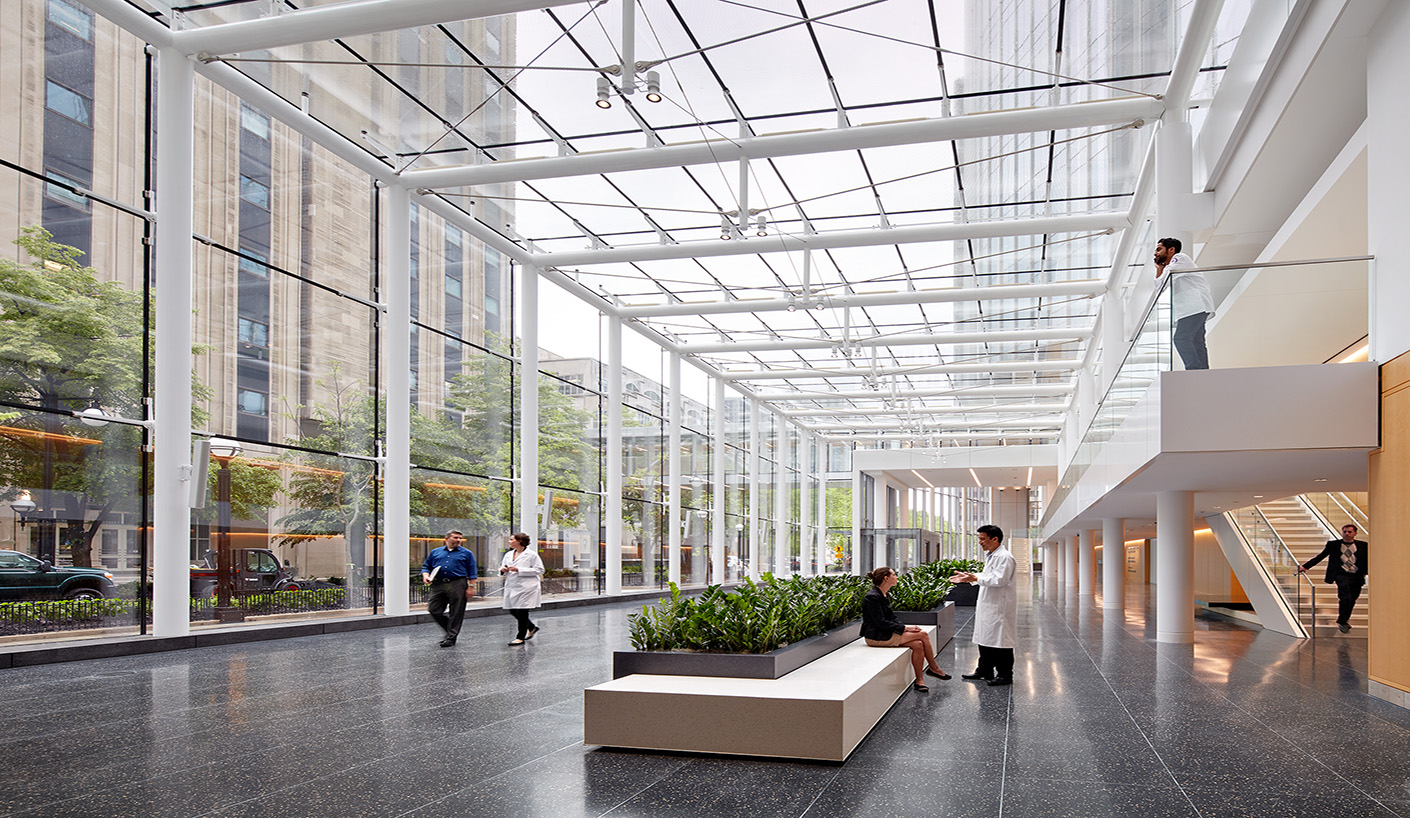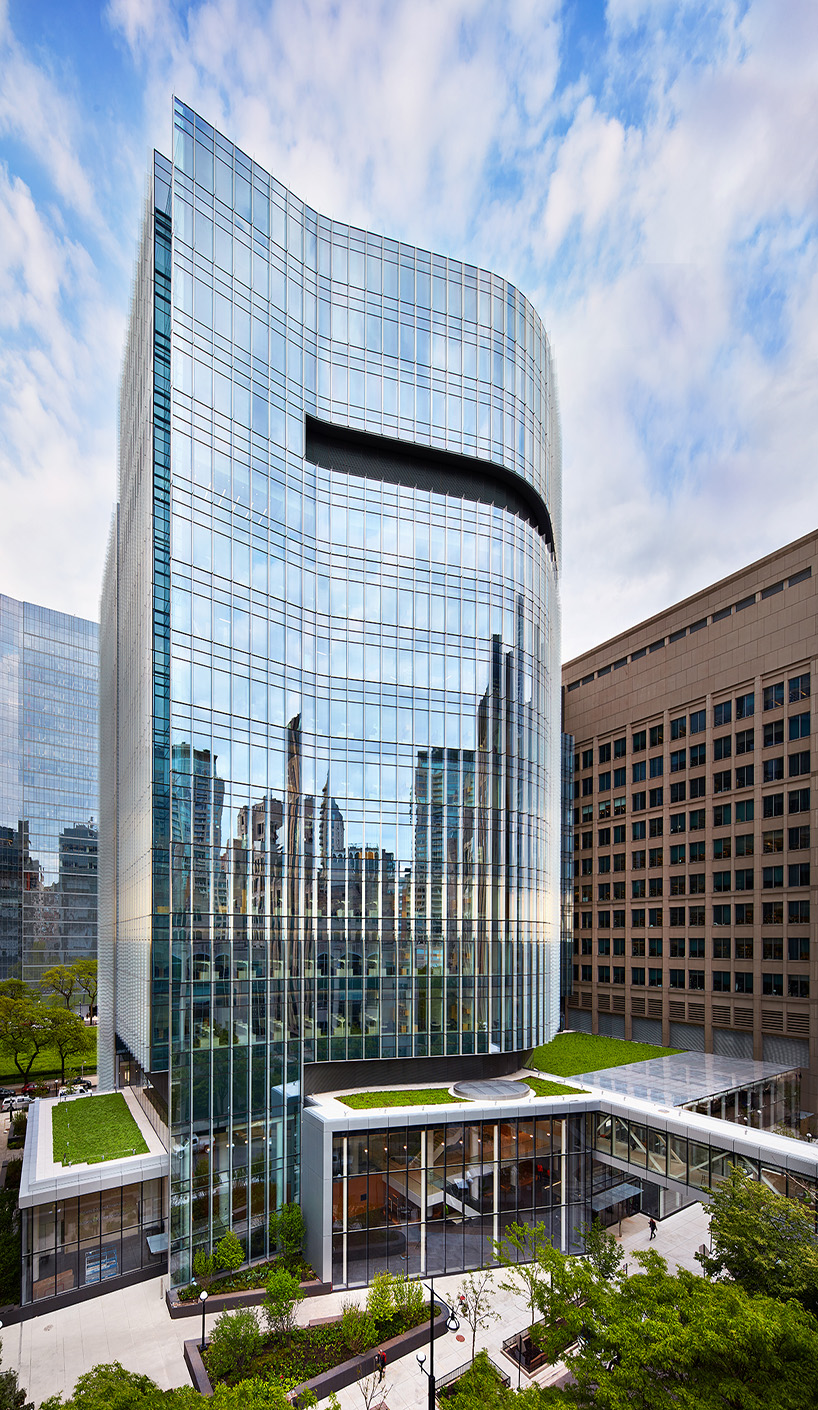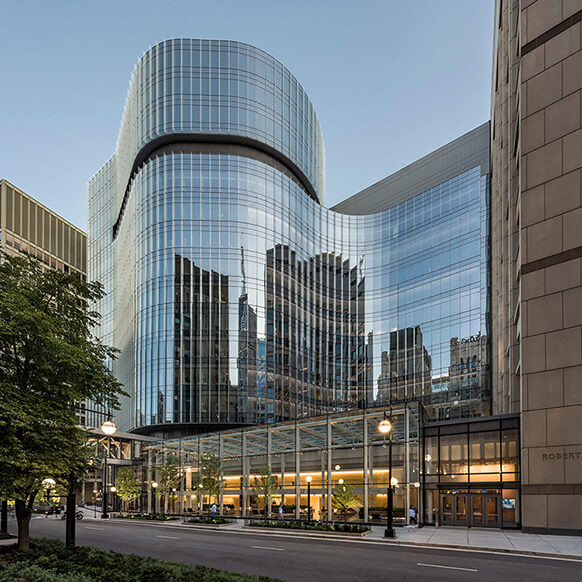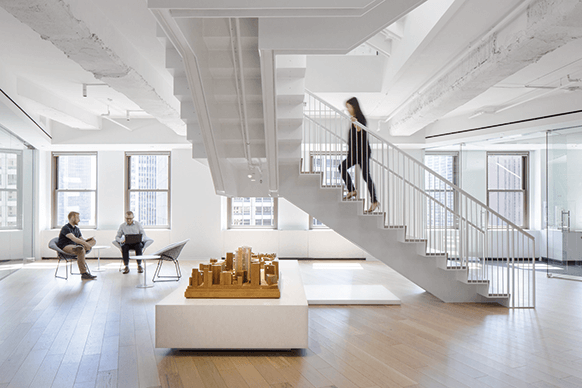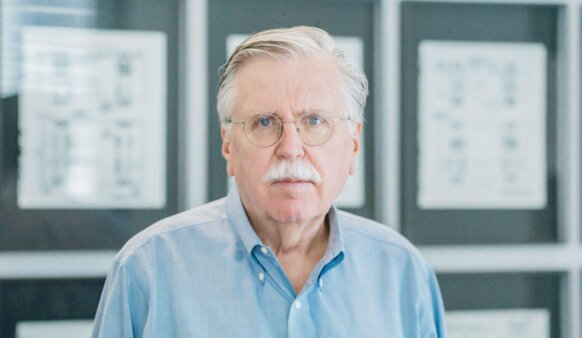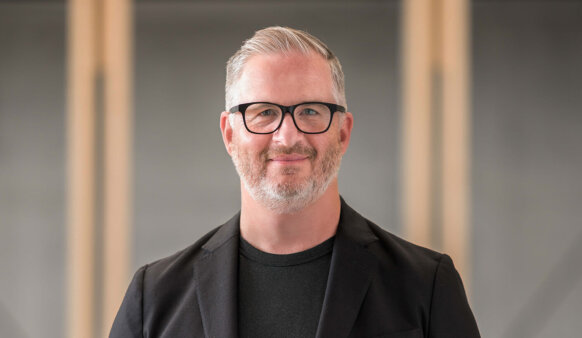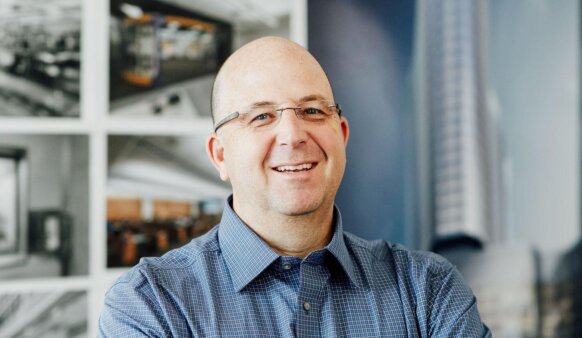The research center is currently the largest new academic biomedical research facility in the country, and maximizes limited space in a dense neighborhood. Open space at street level and an airy glass lobby create visual permeability. The building’s modern aesthetic reflects the cutting-edge research occurring within.
Nearly 1,500 researchers on nine dedicated laboratory floors are at the heart of a newly unified academic medical district that brings together physicians and scientists from Northwestern University Feinberg School of Medicine, the McCormick School of Engineering, and the Stanley Manne Children’s Research Institute, along with top-ranked clinical affiliates Northwestern Memorial Hospital, Ann and Robert H. Lurie Children’s Hospital of Chicago, and Shirley Ryan AbilityLab.
“The building was designed with elegance and transparency in mind, welcoming the public at street level and prioritizing varied space types, natural light, and extensive collaboration areas,” said Ralph Johnson, Design Director at Perkins&Will.
The center will be home to leading scientists such as Dr. Susan Quaggin, director of Feinberg Cardiovascular and Renal Research Institute, who is advancing medical science in kidney research. Her expanded lab space will be filled with scientists whose expertise in stem cells, blood vessels and developmental biology will accelerate the development of viable bioengineered organs.
